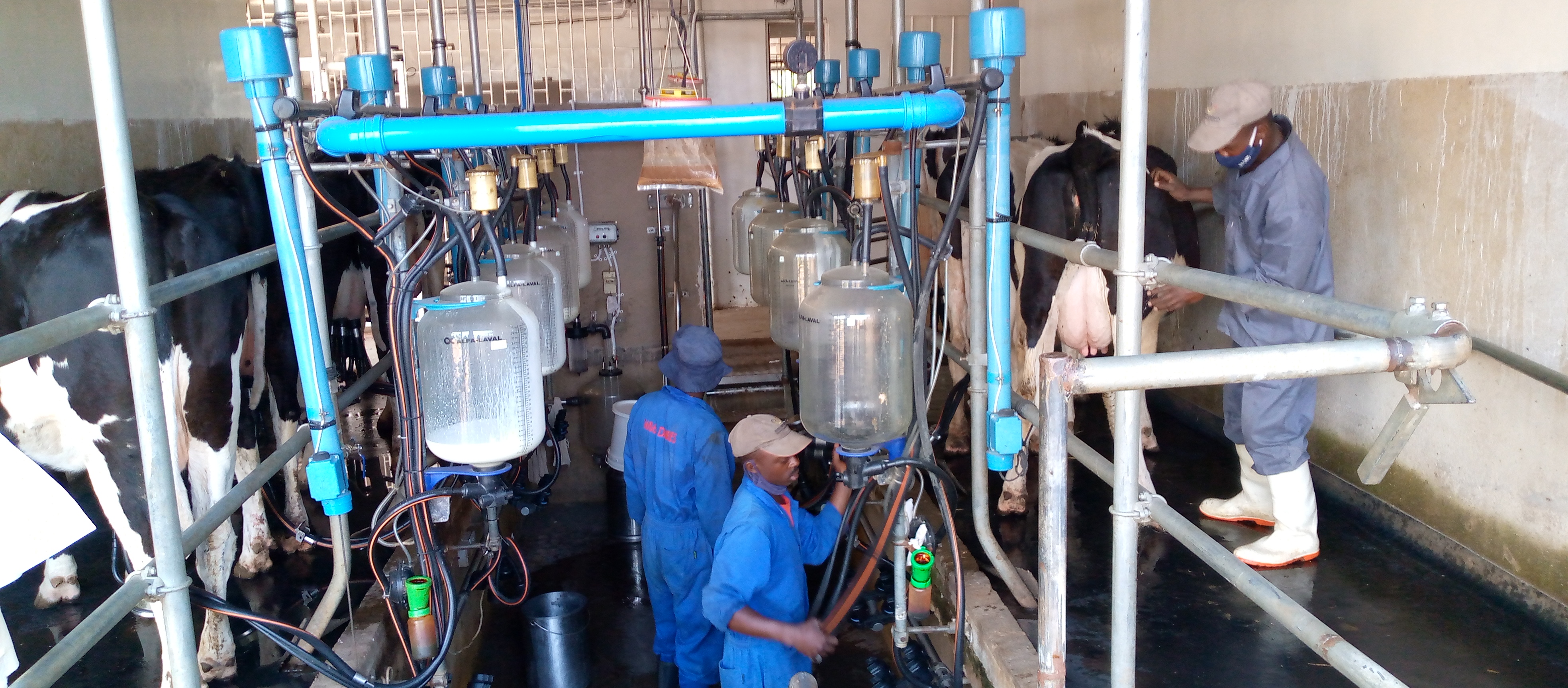
The late afternoon milking session is in progress with the state of the art six-station automated milking parlour machine slowly humming away and quantities of milk gradually filling the containers. It’s a modern and efficient operation as the workers strictly observe all the high –quality handling procedures for clean milk production, and ensuring the environment in the milking parlour is clean and hygienic.
Rudo Sithole (54) is also at hand supervising the proceedings. She is the owner of 1684 Dairies, a dairy enterprise in the Bonda area of Mutasa district. in Manicaland Province. She is a typical example of a successful rural female dairy farmer who has defied all odds to succeed in this male dominated sector.
Hers is one of the farms selected by TranZDVC to participate in a Matching Grant Facility, which has catapulted project farmers to greater heights.
With the improvements made on her farm, she can now be classified as a farmer who is on the rise, moving from a mere small-scale to medium scale in less than two years.
During this period, Sithole has been improving her farm progressively. She started as a small-scale dairy farmer whose enterprise has grown into a medium-scale, and currently produces 308 litres of milk per day milking 14 cows, up from milking 120 litres of milk per day milking eight cows.
“My herd size is 45 and currently milking 12, averaging 20 litres per cow per day. Six cows are dry, another six are in-calf heifers, 12 are calves, six are bulls including one pure Simmentaler breed, and three are Tuli heifers to be experimentally crossed with the Simmentaler breed”, said Sithole.
“I am grateful to the TranZDVC project for encouraging women like me to invest in dairy farming and realise the business opportunities in this farming enterprise,” said Sithole.
She received two Matching Grant Facility in- calf heifers in 2021 and in turn, contributed two in-calf heifers a match. Sithole was also supported with a 70% contribution towards purchasing of pipes for gravity fed irrigation system, drawing water from a water source that is 4km away from the farm.
“I contributed US$700 as my 30% match towards investing in the irrigation system and infrastructure. Previously, I struggled without an efficient water reticulation system. With improved water access, the cows now have adequate water and I am now able to grow fodder crops such as Rye Grass to feed the dairy cows” she added.

Milking in progress in Sithole’s milking parlour.
The cost of feed is very expensive. Sithole is using only commercially purchased feed with no on-farm feed processing. The growing of fodder crops is expected to improve on-farm fodder production resulting in reduced cost of feed by about 25-30%. The irrigated fodder will also ensure that her dairy animals get adequate and nutritious feed for increased milk production.
She says she will continue growing forages because i the forages provide feed for her dairy cows and improves the soil on the farm.
“With the combination of trainings I received from the project on fodder production, preservation, clean milk production, herd management, breeding and animal health, the path has been paved for my enterprise to grow bigger and better”, Sithole adds.
TranZDVC’s dairy farmer graduation model has resulted in at least three women dairy farmers transitioning from small to medium-scale production. The project integrates women inclusion in dairy production and equips them with prerequisite skills and knowledge to allow innovative women leadership in dairy value chains.
To achieve this, the project is using a holistic approach that includes herd rationalization, good animal husbandry practices (covering cattle nutrition, animal health, cattle breeding, linking farmers to input and output markets, as well as linking them to sources of credit to improve investments in dairy herds. Additionally, farmers also learn essential business development skills such as marketing intelligence, negotiation skills, and record-keeping to improve efficiencies when transacting with value chain players.
